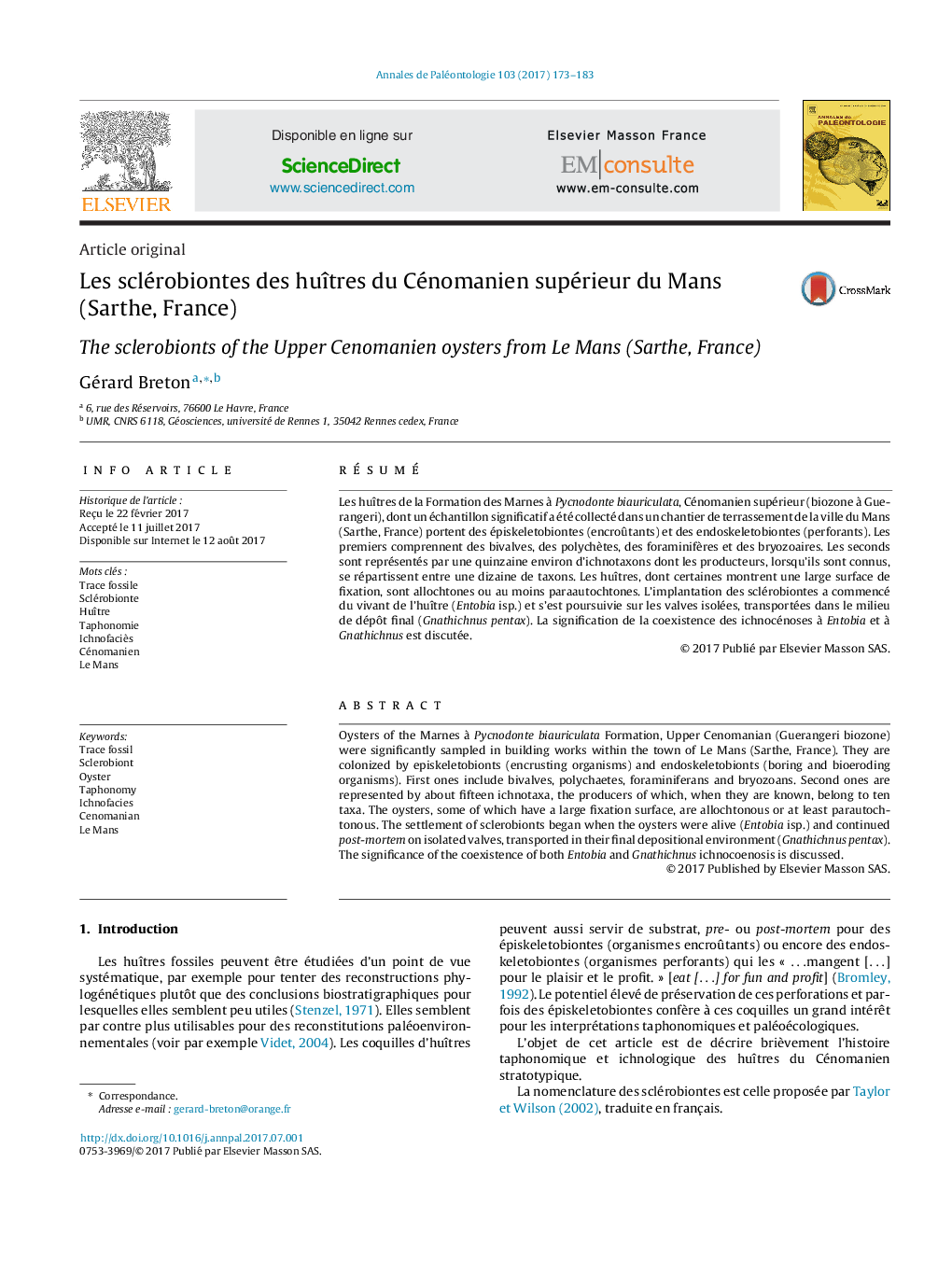| کد مقاله | کد نشریه | سال انتشار | مقاله انگلیسی | نسخه تمام متن |
|---|---|---|---|---|
| 5787726 | 1641990 | 2017 | 11 صفحه PDF | دانلود رایگان |

RésuméLes huîtres de la Formation des Marnes à Pycnodonte biauriculata, Cénomanien supérieur (biozone à Guerangeri), dont un échantillon significatif a été collecté dans un chantier de terrassement de la ville du Mans (Sarthe, France) portent des épiskeletobiontes (encroûtants) et des endoskeletobiontes (perforants). Les premiers comprennent des bivalves, des polychètes, des foraminifères et des bryozoaires. Les seconds sont représentés par une quinzaine environ d'ichnotaxons dont les producteurs, lorsqu'ils sont connus, se répartissent entre une dizaine de taxons. Les huîtres, dont certaines montrent une large surface de fixation, sont allochtones ou au moins paraautochtones. L'implantation des sclérobiontes a commencé du vivant de l'huître (Entobia isp.) et s'est poursuivie sur les valves isolées, transportées dans le milieu de dépôt final (Gnathichnus pentax). La signification de la coexistence des ichnocénoses à Entobia et à Gnathichnus est discutée.
Oysters of the Marnes à Pycnodonte biauriculata Formation, Upper Cenomanian (Guerangeri biozone) were significantly sampled in building works within the town of Le Mans (Sarthe, France). They are colonized by episkeletobionts (encrusting organisms) and endoskeletobionts (boring and bioeroding organisms). First ones include bivalves, polychaetes, foraminiferans and bryozoans. Second ones are represented by about fifteen ichnotaxa, the producers of which, when they are known, belong to ten taxa. The oysters, some of which have a large fixation surface, are allochtonous or at least parautochtonous. The settlement of sclerobionts began when the oysters were alive (Entobia isp.) and continued post-mortem on isolated valves, transported in their final depositional environment (Gnathichnus pentax). The significance of the coexistence of both Entobia and Gnathichnus ichnocoenosis is discussed.
Journal: Annales de Paléontologie - Volume 103, Issue 3, JulyâSeptember 2017, Pages 173-183